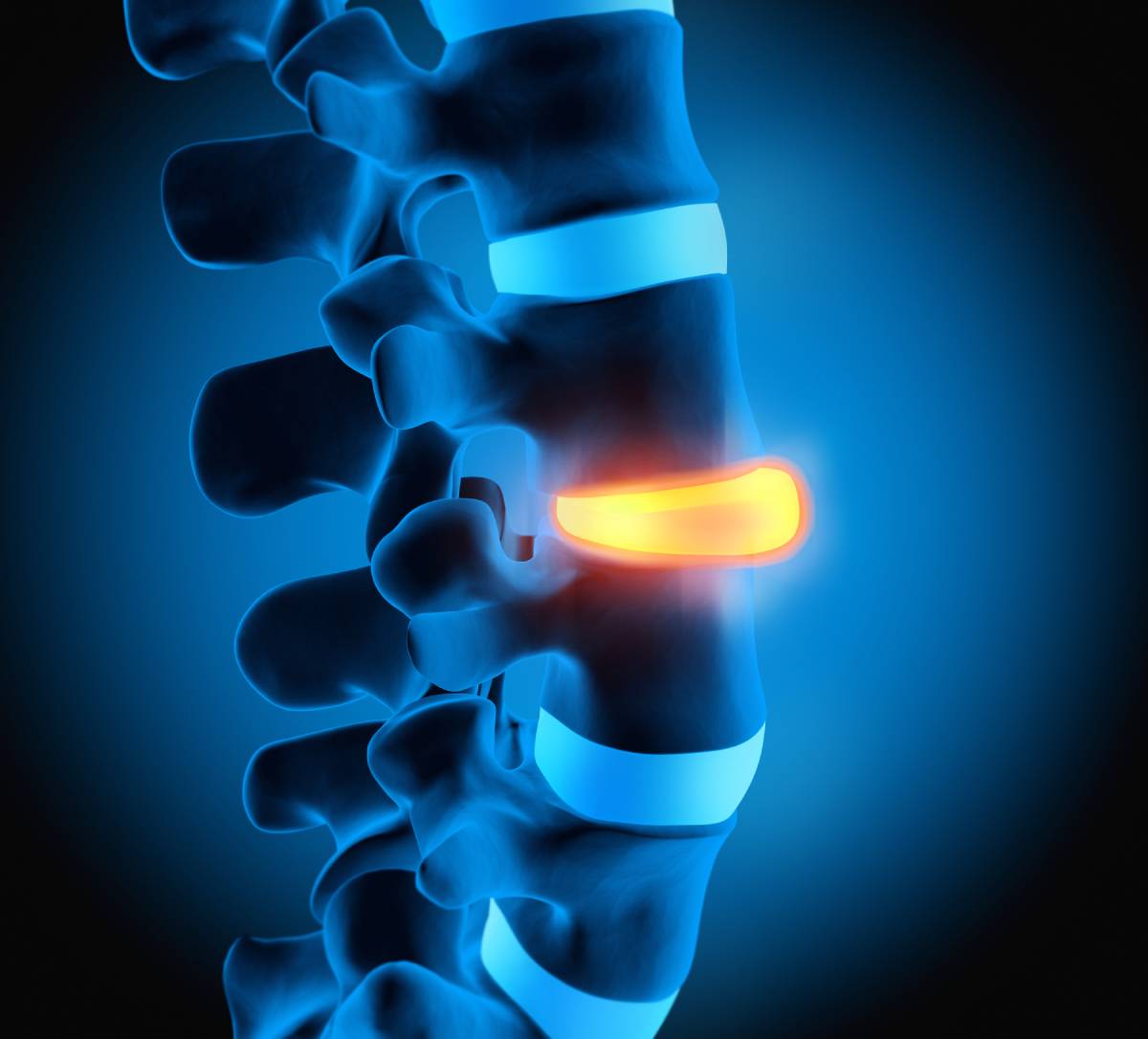In light of an increasingly sedentary society, back pain is growing increasingly common among the general population (1), resulting from a number of ailments – of which bulging or herniated discs are quite frequent.
A bulging disc is formed when the soft cushion of tissue between vertebrae pushes outward, resulting in consistent pressure. In contrast, a herniated disc is formed when the outer covering of the disc is torn, causing the innermost nucleus pulposus to leak into the spinal canal. Both bulging and herniated discs result in significant pain and tenderness, although bulging discs tend to generate a radiating sensation of dull pain. In more severe cases, bulging or herniated discs may impinge traversing nerves as these exit the neural foramen, causing nerve pain, or even directly compress the spinal cord contained within the spinal canal. Both most frequently affect the cervical and thoracic spinal regions (2).
Clinically considered degenerative, a bulging disc presents as a progressive, gradual onset of symptoms. Symptoms can include pain in the buttocks, legs, or back, preventing a patient from walking smoothly. Bulging discs tend to affect multiple discs and may generate other disc degeneration-related issues, such as lumbar stenosis, or a narrowing of the spinal canal (3). Short-term treatment includes the administration of anti-inflammatory medications, especially during acute flare-ups. Steroids may also be administered in the case of significant nerve pain. Thereafter, long-term treatment involves a self-directed exercise program which is begun with a physical therapist prior to being continued at home. In the case of lumber stenosis, lumbar decompression surgery – decompressing the spinal canal such that the nerves are no longer compressed to alleviate the pain – may be warranted.
Herniated discs generally occur abruptly, as a result of an acute injury, and affect only one individual nerve root (3). If symptoms have lasted less than 6 weeks and patients have not experienced any nerve damage, anti-inflammatory medications, physical therapy or chiropractic treatment, and steroid injections can help address symptoms over a 6- to 12-week period. Most modern chiropractors use a variety of effective treatment approaches, including gentle soft tissue therapies, graded mobilization, and intermittent traction. If these less invasive forms of treatment are not sufficiently effective, an outpatient surgery in the form of a microdiscectomy may quickly alleviate the pain by relieving the pressure on the affected nerve root. Certain extreme cases of disc herniation require tailored treatment. For example, lumber disc herniation into the dural space, a rare phenomenon associated with degenerative lumbar lesions among the elderly, requires immediate surgery, yielding generally positive outcomes (4). It should not go unnoticed that, interestingly, a recent study showed that common terms used in lumbar spine imaging reports are poorly understood by the general population and may contribute to the burden of lower back pain (5).
Overall, non-surgical treatments such as chiropractic care are effective and are the preferred first line treatment for a bulging or herniated disc. Alongside lucid and thorough patient education, patient-tailored treatments of varying degrees of invasiveness help patients rapidly resume their normal activities in a safe and sustainable fashion.
References
1. Hanna, F. et al. The relationship between sedentary behavior, back pain, and psychosocial correlates among university employees. Front. Public Heal. (2019). doi:10.3389/fpubh.2019.00080
2. Bulging Discs vs. Herniated Discs: Understanding the Difference – Chiropractic BioPhysics. Available at: https://idealspine.com/bulging-discs-vs-herniated-discs-understanding-the-difference/.
3. Bulging Disc Vs. Herniated Disc: What’s The Difference? – Penn Medicine. Available at: https://www.pennmedicine.org/updates/blogs/musculoskeletal-and-rheumatology/2018/november/bulging-disc-vs-herniated-disc.
4. Ge, C. Y. et al. Intradural lumbar disc herniation: A case report and literature review. Clin. Interv. Aging (2019). doi:10.2147/CIA.S228717
5. Farmer, C. et al. 53 Consumer understanding of terms used in imaging reports requested for low back pain. in (2019). doi:10.1136/bmjebm-2019-pod.66
